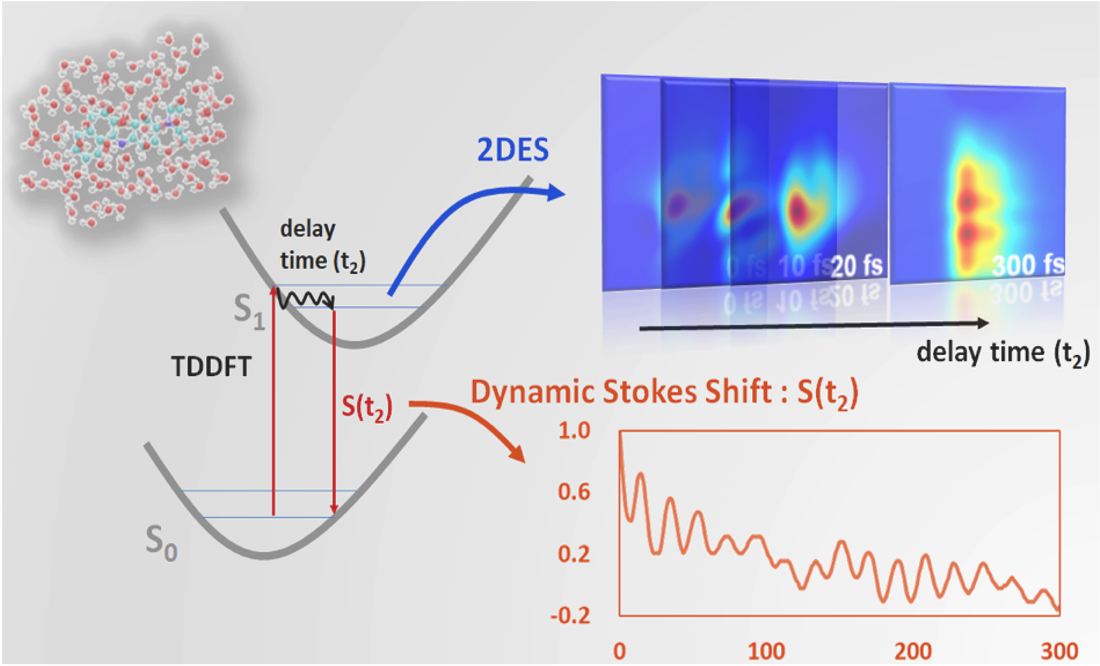Shao-Yu's paper is now published in J. Phys. Chem. B.

In this collaborative work with Liang Shi's group, we expand our previous study of how the treatment of the environment affects simulations of the optical spectroscopy to include analysis of nonlinear spectroscopy. We systematically compare the spectral densities and its corresponding two-dimensional electronic spectroscopy (2DES) and transient absorption (TA) signals, with the analysis of the reorganization energy, dynamic Stokes shift, and static Stokes shift when using a standard fixed-point charge environment to those using a fully polarizable large-scale quantum mechanical environment in the excited state calculations. We isolate the low-frequency motions dominated by chromophore-environment coupling in order to analyze the contribution of the chromophore-solvent interactions to the nonlinear spectroscopy and Stokes shift. This article shows that for the solvated chromophore, the additional polarization provided by the QM solvent and a stronger chromophore-solvent interaction, e.g. pCT- anion in water leads to a systematic intensity increase in the low-frequency region of the spectral density, which then broadens the 2DES signal and leads to a larger Stokes shift. We also expand the analysis tool to study the chromophore-environment interactions for the protein environment (i.e., photoactive yellow protein), and show that its spectral density and nonlinear spectra may be well described by a QM treatment of the chromophore embedded in a MM protein scaffold provided that the protein interior is hydrophobic.
